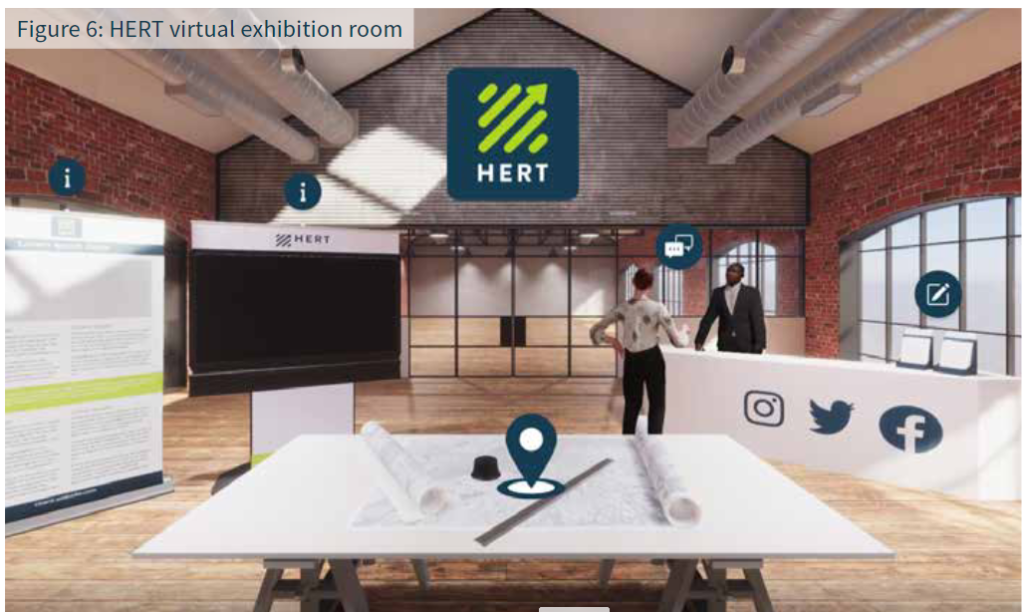Our vision for the HERT
The HERT will deliver a step-change in the passenger transport network through an accessible, reliable and affordable east-west transit system which connects people easily to where they live, work and visit and will support economic growth, improve the environment and positively impact our existing and new communities. The HERT will connect with north-south rail lines to create new sustainable journey options across the whole of Hertfordshire and beyond.
Where will it go?
The HERT will form an east-west transport corridor that runs from Watford and Hemel Hempstead in the west to Harlow (Essex) in the east.
The key settlements that will be served by the HERT are connected by the A414 east-west transport corridor, the A405 North Orbital Road and Abbey Rail Line between St Albans and Watford. These transport corridors provide vital local, regional and strategic connections. The corridor will be split into three sections:
- Hemel Hempstead – Gilston this is the main east-west section that will serve the main settlements between Hemel Hempstead and the new Gilston Garden Town. It will also improve connections to Luton Airport via interchange in St Albans.
- St Albans – Watford this north-south section will operate between St Albans and Watford. This corridor is currently served by the Abbey Line with potential for onward connections to west Watford.
- Gilston-Harlow (and onwards to Stansted Airport) will provide links from Gilston Garden Town and into Harlow, providing improved onward connections to Stansted airport via the new bus interchange at Harlow town centre.
It is likely that these sections will be delivered in phases as funding becomes available and in line with planned development.

Why do we need it?
Currently roads in Hertfordshire suffer from traffic congestion due to high levels of car dependency because of a lack of attractive alternative travel options. Over the next 15 years, we will be supporting the District and Borough Councils plan for more than 100,000 new homes and 100,000 new jobs across the county to meet our needs.
A significant number of these homes will be built along this corridor. This means there will be further demand on our already congested road and rail network as more people travel.
What does it mean for Hertfordshire and Essex?
This scheme is an opportunity to reset our ambitions for a new sustainable transport system that crosses urban and rural environments in our diverse county and into west Essex.
It is a chance to think differently and transform our transport infrastructure to one that uses clean energy and provides a real alternative to using private cars – tipping the balance in favour of walking, cycling and passenger transport.
The HERT will help us take one step closer to achieving a cleaner, greener and healthier county.
What are the benefits?
The HERT is being developed to improve Hertfordshire’s transport network in a sustainable way, and to do this, we need to strike the right balance of benefits between our environment, our people and our economy to deliver positive outcomes for our communities.
Some of the benefits include:
- Our Economy: The HERT will make travel easier to access current and future job opportunities and will provide businesses with greater access to skilled people
- Our Environment: The HERT will provide a sustainable alternative to the car, helping to enhance our environment and quality of life through a cleaner, greener transport system
- Our People: The HERT will provide a convenient and competitively priced system that will cater for all ages and abilities in our diverse communities.
Find out more about the benefits the HERT could bring in the virtual exhibition room.
What type of vehicle will it be?
The details around how the HERT will operate, the exact route it will take, and the type of vehicles it will use will be explored through detailed technical studies and further public engagement. Therefore, these elements will not be included as part of this public engagement. Hertfordshire County Council and Essex County Council will work closely to ensure that rapid and seamless journeys can be made across the entire rapid transit network.
Our vision is for a zero-emission vehicle with a modern, comfortable and spacious design that is easy and accessible for all passengers to use.
Have your say on the HERT
We are now analysing your feedback and will share the findings in Spring 2022.
You can still find out more information about our ambitions for the HERT by downloading the HERT brochure from our key documents. If you missed the public engagement period and would like to share your feedback on the HERT, please contact us at HERT@hertfordshire.gov.uk or phone 0300 123 4047.

Making HERT a reality

A project of this scale will take some years to develop and needs substantial investment from local and central government, together with private sector partners. We are in the early stage of developing proposals on the HERT and have a number of steps to go through before it can be built. We will be consulting the public at each stage, with ongoing stakeholder engagement throughout the duration of the scheme.
Get in touch
For enquiries or to request hard-copy materials, contact us at HERT@hertfordshire.gov.uk or phone 0300 123 4047.


Share article
LinkedIn Twitter Email